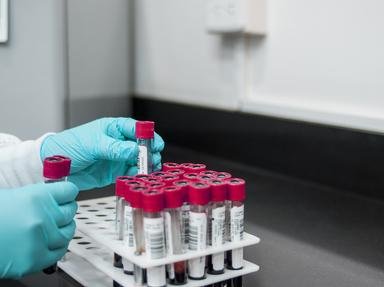Quiz Answer Key and Fun Facts
1. Who was credited for the invention of the mass spectrometer?
2. In a mass spectrometer, molecules are bombarded with high-speed electrons and are ionized before broken into smaller fragments, namely cations and radicals. Which species will be detected by the mass spectrometer?
3. Ions formed in a mass spectrometer will be separated by magnetic deflection. The radius of curvature of the ion's path depends on the ratio of m/z. (m is the mass and z is the charge of the ion). Which of the following ions will bend the most?
4. The peaks shown by a mass spectrum are given in terms of relative abundance, where the strongest peak (also known as the base peak) is assigned a value of 100%. On the other hand, the parent peak (also known as the molecular ion peak) is the peak shown by the molecular ion, M+ after losing only 1 electron (without undergoing any fragmentation). Will this parent peak always be the base peak?
5. The peak with the greatest m/z value for alcohols is given by m/z M-18, where M represents the molecular weight of the alcohols. The number 18 in "M-18" means that the radical cation loses a (an) ___ molecule.
6. The most common fragmentation pattern for alkanes is the one that occurs at the molecules' branches.
7. The presence of which element in any compound is characterized by an odd number of m/z for its parent peak?
8. You notice that a mass spectrum shows the equal intensity (peak) for both m/z at M+ (molecular ion) and M+2 (the molecular weight of the compound plus 2). Which element is present in the compound?
9. The mass spectrum of 2, 2-dimethylpropane, (CH3)4C shows a base peak (the peak with the highest intensity) at m/z 57. This m/z 57 corresponds to the (CH3)3C+ species. What kind of carbocation is it?
10. An unknown chemical compound is given to you and you run a test by using a normal mass spectrometer. From the spectrum, you know that the molecular weight of the compound is 28. This 28 indicates that your compound might be CO, C2H4 or N2, since the molecular formulae for these three compounds are 28 as well. You decide to put the compound in an HR-MS this time to determine the correct molecular formula of this compound. What does HR-MS stand for?
Source: Author
Matthew_07
This quiz was reviewed by FunTrivia editor
crisw before going online.
Any errors found in FunTrivia content are routinely corrected through our feedback system.

